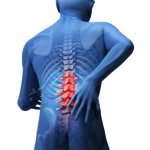The History Of Back Pain Treatment
According to this article, studying the history of back pain treatment, we find that the approach towards mending one of the most important physical problems in life, the treatment of the spine, has undergone rapid changes that are keeping pace with the progress of science. The spine has been attributed to be the most important part of the body because it exhibits strength and flexibility.
Gradually realizing the importance of the spine, physicians have done extensive research work before taking any pragmatic approach for treatment of back pain. While Yoga practitioners have emphasized proper body postures, Chiropractors have followed the method of subluxation. Hippocrates had advocated for traction and splints, while IbnSina discussed at length about neuro-anatomy. With the invention of radiology, anesthesia and antiseptics, more light is being thrown on this major ailment.
The History Of Back Pain Treatment
Get the facts on pain treatments, including medication, exercise, and chiropractic care.
Spinal disease is a condition so common that we should understand it, and learn to manage it properly.
THROUGHOUT history, humans have projected the spine as an allegory of strength and moral righteousness. Thus, we have expressions such as:
“A man can’t ride your back unless it’s bent.” – Martin Luther King Jr
“Vocation is the spine of life.” – Friedrich Nietzsche
“Spineless, savage, harpooning fish-eaters, incapable of any feeling of…” – King Triton, before being interrupted by Princess Ariel in the movie The Little Mermaid (1989)
The anatomic reality is that the human spine is truly a wondrous structure, displaying both strength, as well as flexibility. Made up of 33 individual building blocks of bone articulated with each other via intervening discs, the spinal column is a sinuously long column of mobile segments, distantly reminiscent of a millipede’s body.
This bony column contains a hollow canal, which houses within it, the spinal cord – a leash of nerves that transmit signals between the brain and the rest of the body. These signals control movement, enable perception of senses like touch, pressure, pain and temperature, and regulate the internal environment of body organs like the heart, lungs and intestines.
It is no wonder then, that ancient man attributed much to the backbone.
In Greek mythology, the deity of medicine, Asclepius, wielded a serpent-entwined wooden staff, which represented the spine as the nerve centre of all psychic forces believed responsible for bodily functions.
The primordial Greek Titan, Atlas, who held the human world on his shoulders, lends his name to the topmost spinal bone segment holding up the human head.
For ages, yoga practitioners in India have paid emphasis to maintaining proper back posture for health purposes. In recent times, chiropractors believe that spinal instability, termed “subluxation”, was responsible for a whole cartful of diseases, ranging from arthritis to diabetes and cancer.
Realisation of the importance of the spine in enabling motion and sensation was followed by the devising of techniques to treat back disease and injury.
Over 4,000 years ago, spine injuries were documented by Egyptian healers, who dutifully recorded such cases on illustrative papyri. Unfortunately, therapy methods were mostly of dubious value, what with attempting to treat spine injuries by wrapping the neck with slabs of meat, and pouring honey on the skin at intervals.
In 400BC, Hippocrates – widely considered to be the “Father of Medicine” – advocated splints and traction to treat spinal injury and deformity. Limited to the technology and anatomic knowledge of his time, some of his devices resembled medieval torture machines.
By AD1000, a breath of fresh air came in the form of IbnSina, the great Muslim physician, who described the functional neuroanatomy of the spine and the body in accurate detail. This enabled the development of practical devices to stabilise the backbone after injury or deforming diseases.
However, truly meaningful spine treatment had to sit it out until the discovery of antiseptics, radiological imaging and safe delivery of anaesthesia in the 19th and 20th centuries.
In 2010, the United States National Institutes of Health estimated that up to 85% of all adults suffered from back pain at some time in their lives.
For ages, importance has been given to the spinal cord, which plays a vital role in supporting our body structure as well as enabling our daily activities. Different physicians from different disciplines have advocated for various methods of treatment for the spine, with Yoga, chiropractic treatment, spinal traction, and splints coming up with help. With the advance of science, we now see a total evolution in the history of back pain treatment through modern systems and approach. Back pain is not a new phenomenon, so why is it so difficult to resolve?
Ultimate Sports Therapy – Osteopathy & Certified Athletic Sports Therapist Carolyn Zepf discusses the history of back pain.
Before prescribing treatment for back pain, your doctor will take a careful look at your history and examine you. Occasionally some routine tests are used to determine the source of your pain. Learn from Dr. Paul Knoepflmacher from Health Nation about which treatment options are best for your type of back pain.
You might also like:
Tags: The History Of Back Pain Treatment, Treatment















